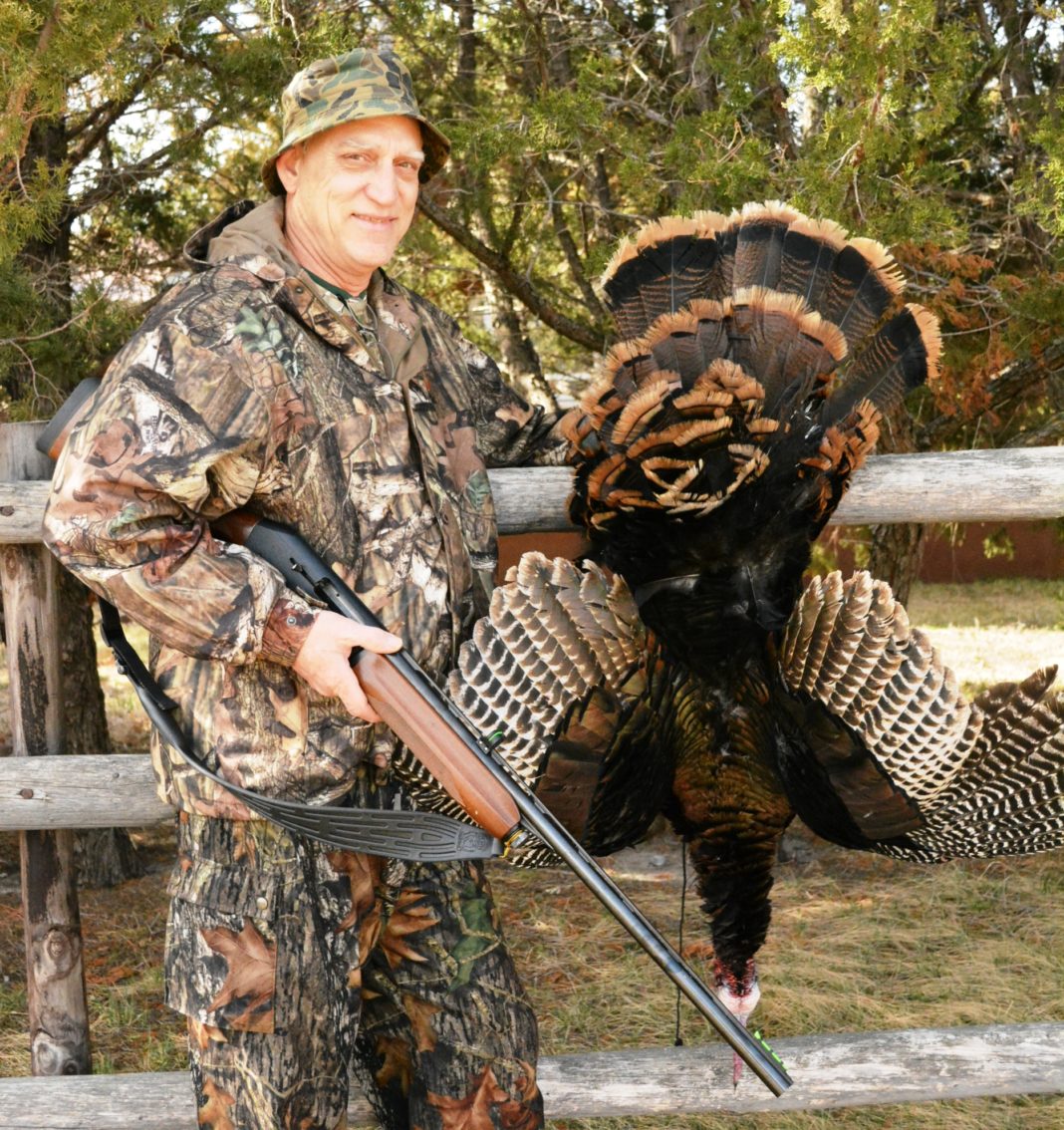The cover story of Bowhunt America this spring is “Fanning Turkeys,” a tactic that has been a tightly kept secret in hunting camps throughout the west and midwest. I heard stories about fanning from hunters who shared adventures that seemed too good to be true. “Turkeys will actually come to you, sometimes on the run?” I asked.
“Yep,” I was told. “Just display the turkey tail like a gobbler and other toms will come to fight you.”
 Tucking a fan from a freshly killed gobbler in my vest, I took a new hunting camp acquaintance to a section of prairie in central South Dakota, near our annual hunting camp. We listened for gobbles, called, and did the usual hunting tactics for the first hour with no results. Eventually, we spotted three gobblers feeding across an open field and made a deliberate stalk to get within range. Unfortunately, the birds made a right turn and caught sight of us at about 100 yards. The toms had their heads up and I knew we’d get no closer. Just then I remembered the fan in my vest, and slowly pulled it out, spread the feathers, and tilted it as a gobbler does. We were in cover so the toms couldn’t see our silhouette, yet they could see the fan. For about ten seconds, the birds watched intently, then one by one backtracked and followed a ridge right for us. My hunting partner killed the lead tom at 25 yards, a mature Merriam’s. We could barely believe our eyes.
Tucking a fan from a freshly killed gobbler in my vest, I took a new hunting camp acquaintance to a section of prairie in central South Dakota, near our annual hunting camp. We listened for gobbles, called, and did the usual hunting tactics for the first hour with no results. Eventually, we spotted three gobblers feeding across an open field and made a deliberate stalk to get within range. Unfortunately, the birds made a right turn and caught sight of us at about 100 yards. The toms had their heads up and I knew we’d get no closer. Just then I remembered the fan in my vest, and slowly pulled it out, spread the feathers, and tilted it as a gobbler does. We were in cover so the toms couldn’t see our silhouette, yet they could see the fan. For about ten seconds, the birds watched intently, then one by one backtracked and followed a ridge right for us. My hunting partner killed the lead tom at 25 yards, a mature Merriam’s. We could barely believe our eyes.
This year, Toby Shaw teamed up with Harlin Potvin, who had never before hunted turkey. The day began in darkness and became promising with the first gobbles of the day. Shaw and Potvin moved closer until they reached a crest where they could see the birds and work the Thunder Chicken gobbler decoy with a real turkey fan and not be seen. One by one, the flock flew down and the hunters sneaked to within 100 yards, where Shaw popped the decoy on the horizon and called softly. Putvin lay beside Shaw. Soon the flock boss spotted the decoy and came directly toward it. “Get ready, here it comes” whispered Shaw. “He’s coming; take your safety off.”
 Shaw worked the decoy, replicating the motions of an aggressive tom as Putvin eyed the flock 50 yards out. “Which bird should I shoot?” whispered Putvin making sure he picked out a gobbler.
Shaw worked the decoy, replicating the motions of an aggressive tom as Putvin eyed the flock 50 yards out. “Which bird should I shoot?” whispered Putvin making sure he picked out a gobbler.
“That one!” said Shaw as a longbeard burst over the horizon just five yards away.
“This blue head just popped up, and I swung and let go at this blue blob,” laughed Putvin later, nearly intimidated by the aggression of the tom as feathers flew and the bird flopped down the hill.
Fanning always has to be done with extreme caution, yet in the wide open areas, it can be deadly on even the cagiest of gobblers.
Tell us what you think in the comments section below.



















![The Best Deer Camp Chili [VIDEO] Deer Chili Ingredients, Tomatoes, Chili Spices](/wp-content/uploads/2015/10/Deer-Chili-Deer-Camp-Recipe-218x150.jpg)
![How to Call Elk Early in the Season [VIDEO]](/wp-content/uploads/2016/08/byers003-218x150.jpg)




![Idiots Disturb Hunter: How Would You Have Handled It? [VIDEO]](/wp-content/uploads/2015/10/DSC00110-e1474487693878-100x70.jpg)
![Albino Buck Shocked to Shed His Antlers [VIDEO]](/wp-content/uploads/2015/10/AlbinoDeer-100x70.jpg)